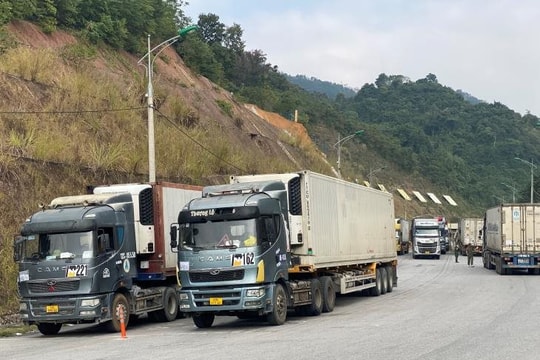
Freight Rate Trends and the Impact of the Strike
According to industry experts, container freight rates from Asia to the U.S. and Europe have significantly dropped compared to the peak levels seen in the summer of 2023. Although port congestion at the U.S. East and Gulf Coasts has not been fully resolved following the three-day ILA strike, spot freight rates remain more than 30% lower than their July highs. Analysts point to seasonal decreases in cargo demand and the fact that shipping lines have not yet implemented additional surcharges as key reasons for the continued decline.
Impact of the Strike and Cargo Backlogs
The three-day strike by ILA members left around 70 vessels stranded at ports along the U.S. East and Gulf Coasts, causing considerable cargo backlogs and making it difficult to unload goods at these ports. However, expert estimates for clearing these backlogs range from a few days to two or three weeks. Importantly, despite these challenges, the strike has not significantly impacted the downward trend in freight rates in the short term.
Judah Levine, lead analyst at Freightos, noted that shipping rates from Asia to both U.S. coasts had been falling before the strike and continued to decline during the port closures. Levine added that now that the strike has ended and the peak demand season has passed, container rates are expected to drop further as seasonal cargo volumes decrease between the year-end peak season and the Lunar New Year.

Shipping Lines’ Adjustments
In response to the strike's effects, several shipping lines announced surcharges ranging from $1,000 to $4,500 per 40-foot container. However, because these surcharges were only set to take effect in mid-October or later, they did not have an immediate impact on spot rates before the strike ended. Shipping lines have since decided to suspend the implementation of these surcharges.
Moreover, one of the key measures that shipping lines have taken to address declining cargo demand is increasing the number of blank sailings (canceled voyages) on east-west trade routes. This move aims to prevent further port congestion at U.S. East Coast ports and to manage operational costs more effectively.
MSC, one of the largest shipping lines, announced the cancellation of four blank sailings from Asia to the U.S. East Coast on its 2M alliance services. The company cited "ongoing congestion at U.S. East Coast ports" as the reason for this decision. The congestion has not only affected port operations, leading to delays in cargo handling, but also hindered the ships' ability to return to Asia on schedule to maintain their regular rotations.
Price Reductions on Major Shipping Routes
Data from Drewry’s World Container Index (WCI) shows that spot rates on major routes from Shanghai to New York and Los Angeles continue to decline. Specifically, the freight rate from Shanghai to New York dropped by 3% week-on-week to $5,761 per 40-foot container, while the rate from Shanghai to Los Angeles fell by 5% to $5,071.
Similarly, Xeneta’s XSI index for the trans-Pacific route recorded a 2.5% decrease, with rates falling to $5,489 per 40-foot container. Shipping routes from Asia to Europe also saw price reductions, with the Shanghai-Rotterdam leg down 6% to $3,591, and the Shanghai-Genoa leg falling 2% to $3,784.
In contrast to the declines on major Asia routes, the trans-Atlantic route from Rotterdam to New York experienced a slight increase of 1% week-on-week, reaching $2,083 per 40-foot container. The XSI index for this route also rose by 6%, bringing the rate to $3,018 per 40-foot container.

Future Trends and Challenges for the Shipping Industry
While container freight rates are currently falling, the shipping industry faces several significant challenges in the future. Port congestion at U.S. East Coast ports is expected to persist, particularly as the number of blank sailings increases. According to Drewry’s weekly report, between October 14 and November 17, a total of 69 blank sailings were scheduled across the trans-Pacific, trans-Atlantic, and Asia-Europe routes, with a cancellation rate of 10% out of 693 planned sailings.
In the context of declining seasonal cargo demand and ongoing geopolitical factors that continue to impact global supply chains, shipping lines must find ways to optimize costs and adjust operational strategies. The shifting dynamics of trade routes, along with increasing pressure from customers to prioritize sustainability, will present new challenges for the industry moving forward.
The continued decline in container freight rates from Asia, despite the congestion at U.S. East Coast ports, reflects a transitional phase in the global shipping industry. This reduction has been driven by several factors, ranging from seasonal cargo demand fluctuations to strategic adjustments by shipping lines aimed at maintaining supply chain stability.
Looking ahead, the container shipping market will continue to face price volatility and port congestion issues. However, with the recovery from the recent strike and the adjustment of blank sailings, the market is likely to stabilize gradually. Nonetheless, industry players must remain vigilant, closely monitoring market trends and developing long-term strategies to navigate the ever-changing landscape.


.jpg)




.jpg)
.png)
.png)
.png)


.png)
.png)






.png)

